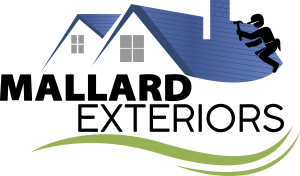A standing seam metal roof from Mallard Exteriors is a wise choice for any residential, commercial, or industrial building in Maryland. The metal roofing materials we offer our clients come in many different styles and colors, not to mention affordable options. This style of roof installation has grown in popularity in recent years due to their durable and long-lasting qualities. If you are interested in adding a standing seam metal roof to your business or home, contact Mallard Exteriors today for a free quote!

First-Rate Standing Seam Metal Roofs In Delaware & Maryland
Well-Trained Metal Roofing Contractors
Because a standing seam metal roof installation is a very intricate process, you’ll want a team of metal roofing contractors you can trust on the job. At Mallard Exteriors, our Maryland roofers are well-trained in all different types of metal roofing, no matter the shape or size. Let our metal roofing contractors install a new standing seam metal roof on your property that will last you decades to come. If you are still on the fence about a metal roof, check out the advantages you may not know about a standing seam metal roof below:
- High seams: High seams are raised above the roofing panel to provide added protection against moisture while minimizing issues with weak spots.
- Seam design: There are no horizontal seams and fewer seams in total, which means fewer ways for future leaks to develop.
- Durability: Metal roof panels are highly resistant to wear and damage
- Longevity: When properly installed by the metal roofing contractors at Mallard Exteriors, your new roof can stick around for 30 to 50 years.
- Cool Roof: According to EPA standards, metal roofing systems are considered cool roofs because they can be painted any color without having a serious impact on heat reflection capabilities. This can help to save you money on those heating and cooling bills!
When you are ready to install a new roof on your property, call the business that Maryland and Delaware’s residents trust the most, Mallard Exteriors. Fill out an online form to get a quote today!
Expert-Level Standing Seam Metal Roof Installation
As one of the leading standing seam metal roof installation experts in Maryland and Delaware, Mallard Exteriors takes pride in offering a wide range of services to our clients. We offer fair prices and financing for all our roofing options and materials, including standing seam metal. Our metal roofing contractors can offer the following services to our Delmarva Peninsula clients:
- Standing seam metal roof installation
- Repair and replacement of metal roof panels
- Standing seam metal roof maintenance
- Routine or seasonal roofing system inspections
No matter if you need help with your installation, general maintenance, repair, or an inspection, Mallard Exteriors is equipped and ready to help. Call us today to make an appointment for a free estimate!
Metal Roofing Materials From Top-Rated Brands
The metal roofing materials we offer here at Mallard Exteriors are from top-rated brands like MasterRib. MasterRib is designed with extra-wide ribs in its panels that result in unique, durable, and budget-friendly roofs. These metal roof panels are available either as pre-formed or site-formed and in varying shades of brown, gray, green, blue, orange, and red. Our fair prices on our metal roofing materials, combined with our excellent services, make it hard to find a better Maryland roofing company than Mallard Exteriors.
Learn more about our roof financing options when you call today!
Get a Free Quote On Your Metal Roofing In Maryland Today!
If you are looking for premier metal roofing services in Maryland, you can’t beat Mallard Exteriors. For years, our metal roofing contractors have perfected the skills needed for long-lasting standing seam metal roof installations and replacements. Our Maryland roofers also specialize in different roofing materials like asphalt shingle, cedar shake, flat roofing, and slate. No matter if you have a commercial business or residence that needs a new or updated standing seam metal roof, we can help. Get a free quote when you contact our team today!
